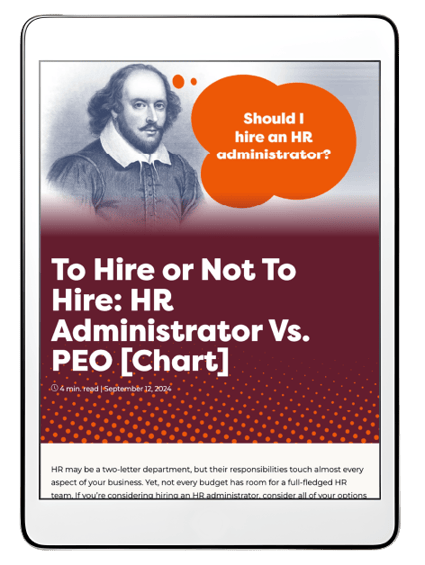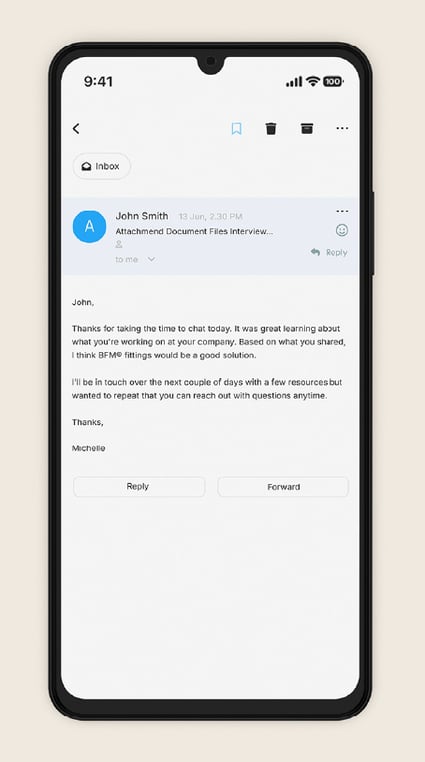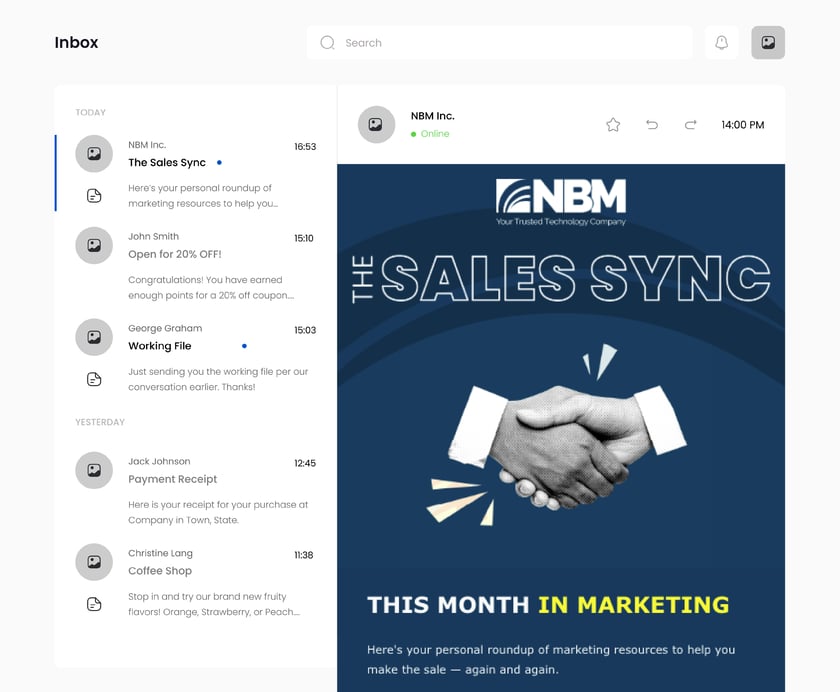Yankees vs. Red Sox. Skywalker vs. Vader. Sales vs. Marketing.
People love to pit teams against each other, don't they? But is it really all that dramatic?
After 10+ years in sales, I've seen all the theories about why these departments don't get along (ego, priorities, silos...). Sure, there's some truth to them. But as a salesperson for a marketing agency, I can tell you the reality. There are a few easy things that sales and marketing teams can do to help each other — and the business.
How to create content that sales will actually use
In the Venn diagram of marketing and sales, one key area these teams overlap is content. Marketing can create content that's helpful to sales, but sales needs to come to the table with helpful information.
Here are my top four tips for marketing and sales to collaborate on impactful content.
1. Pick topics based on prospect FAQs
Let's be honest. Those late-to-the-game "thought leadership" pieces that nobody asked for? Your sales team isn't sharing them. Same goes for generic product overviews that don't address specific pain points.
Marketers, meet with your sales team. Find out what questions prospects are asking and what objections they're raising. Then create content specifically addressing those issues. Don't forget to consider every funnel stage. Top and middle-funnel content educates prospects before they ever talk to sales, making those conversations much more productive.
Real-world example
One of our clients, an outsourced HR company, let us know that prospects were torn between hiring their services or filling the need in-house. Our marketing team created content comparing the pros and cons of each option. Sales shared that resource with prospects, helping them understand both sides. This allowed the sales team to help address a major sticking point and shorten the decision-making timeline.

2. Create content that makes sales easier — not harder
One of the top reasons sales doesn't use marketing content? It's just another thing on their already long to-do list. Marketing content should lighten their load, not add to it.
Sales enablement tools are game-changers here. At Vye, we develop sales sequences written in each rep's voice that automate repetitive communications like trade show follow-ups or initial cold outreach. Once a lead engages, the rep can seamlessly take over, creating that perfect balance of automation and personal touch.
Real-world example
A client of ours was underwater with sales communications. Many of their emails went unanswered; they weren't able to prioritize high-value prospects. Our team created several automated sales sequences, including:
- Post-call follow-up
- Post-purchase follow-up
- Cold outreach
- Cross sell/upsell
- Pre and post trade show
Not only did this save the salesperson hours every week, but it increased the success of their communications because of the prompt and tailored content.

3. Regularly send sales x marketing newsletters
Even great content gets forgotten if it's buried in shared drives or complicated systems. A simple monthly sales and marketing newsletter puts all new assets in one place and reminds the team what's available.
Keep it scannable with clear sections like "New Case Studies," "Updated Pitch Decks," and "Customer Testimonials." Include direct links to everything.
Real-world example
We created a quarterly newsletter for one of our client's sales teams. It combined all new marketing assets and laid out each item as a simple to-do, including sample copy to use in emails and on social media. Engagement skyrocketed. Plus, our client is getting more eyes on their marketing efforts, which is only increasing their ROI.

4. Retarget lost deals
Lost deals are gold mines for sales and marketing collaboration. First, sales needs to share which deals were lost and why. Then, marketing can create targeted content that addresses those specific concerns.
Real-world example
Using HubSpot's integrated platform, we assigned a reason to each lost deal:
- Too expensive
- Not the right time
- Went with a competitor
From there, we created automated emails to follow up with each lost deal after 90 days. Every email was uniquely crafted to speak to the reason they didn't close the deal. If it weren't for the collaboration between sales and marketing, we wouldn't have re-engaged those leads as successfully.

Need help creating content with legs?
The reason I know these tips work is because I've seen them first-hand at Vye. If you want help aligning your marketing efforts with sales, let's talk. But first, check out some more of our work. We specialize in marketing that won't get stuck in the inbox of your sales team — or your customer.

